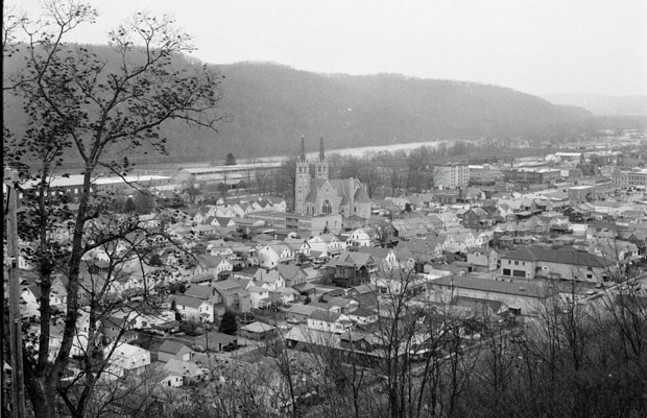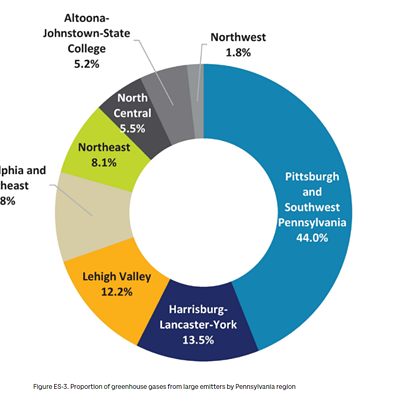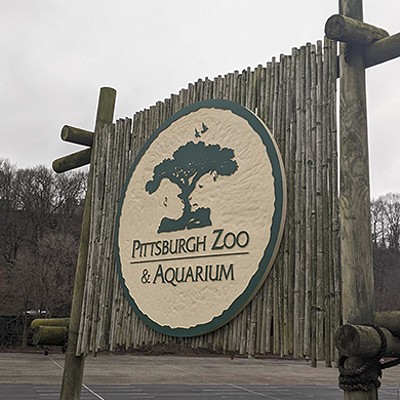Editor’s note: Click here to read our CP Longform version of this story.
In 1993, Ford City, in Armstrong County, lost its massive PPG plate-glass factory after years of the company shedding jobs and lowering production. To replace that 200-acre facility, the town was able to obtain $12 million in funds to construct a 70,000-square-foot business incubator.
But the project didn’t go as planned: One of the original tenants went bankrupt and Ford City was eventually forced to foreclose on the property. Even with the boost it received from public and private funding, Ford City still fell victim to the narrative so common to Western Pennsylvania company towns: When the company left, the town failed to return to its peak vitality. Since then, in addition to losing the businesses incubator, Ford City has been ridiculed by the media, and its poverty, population decline and drug problems have only worsened.
Despite these growing problems, many in the town of 2,800, 40 miles northeast of Pittsburgh, remain optimistic, including a young borough councilor named Tyson Klukan. “You need optimism, but you also need energy,” says Klukan. “This is not the PPG era any more. You can’t forget the past, but you have to brand for the future.” And what lies in store for Ford City might prove a template for the future of Western Pennsylvania’s deteriorating rural towns. Can they come back or will they continue to decline?
At its peak, in 1930, Ford City had more than 6,100 residents. Growth was driven mainly by Pittsburgh Plate Glass Company, now called PPG. “When PPG was at its height, it had 5,000 employees,” says Don Mains, an outspoken advocate for Ford City. “It was designated the largest plate-glass company in the world.”
John Ford, one of the PPG’s founders, enabled the company to reach these heights by building a compact and efficient town around the factory in 1887. In an area of less than one square mile, tidy houses were crammed together on narrow blocks; a handsome central park provided workers with green space; and a small business district supplied residents with bars, restaurants and shops.
Towns like Ford City were popping up all over Western Pennsylvania, and there were more than enough people who wanted to live in them. But as technology improved and business owners looked to make factories more efficient, PPG decreased its workforce, and Ford City’s population began to drop. In 1993, PPG closed its operations in the borough.
“When I was a growing up, there were still 2,000 employees at PPG,” says Mains, who is in his 60s. “And then for a generation, from 1993 on, all they saw was a rusted building.”
But while many other company towns in the region lost their company and weren’t able to find a viable replacement, Ford City was able to start a huge project just four years after PPG left. Thanks to strong backing from local politicians like then-U.S. Rep. John Murtha, and great marketing by Mains and others, the borough was able to raise $12 million in federal, state and private funds to redevelop the PPG facility into a business incubator.
“We were going to attract businesses from outside, but equally and perhaps even more [importantly], we were going to help the local businesses grow,” says Mains. “Helping local businesses grow, that is how you create jobs.”
National media including the Wall Street Journal covered the project, and Mains says it became the poster child for former industrial-site redevelopment. Ford City completed the project in 2004, and attracted a high-tech manufacturing company, Caracal, to fill the space. Unfortunately, Caracal was a fairly new enterprise and went bankrupt within a few years.
For the past few years, Mains has been promoting the theory that the project was sabotaged by corrupt officials; he has repeatedly contacted regional media outlets about it, with no success. Mains, a former U.S deputy assistant secretary for economic development in the George W. Bush administration, believes that if the sabotages he alleges are revealed, the town can reclaim some of its former glory.
However, the story of the project’s downfall has been covered extensively by local and regional media, and there’s little to no evidence to support Mains’ claims. And Hobbie Webster, of the legal firm Weiss Burkardt Kramer, who investigated the case on Mains’ behalf, says the firm found no proof of his allegations. “I did not find any kind of self-dealing,” says Webster. “What I found was a project that never should have been leveraged the way it was. They were so desperate for clients. They signed up with Caracal, who didn’t have a long history, they had just been created. The recession hit and Caracal went under.”
David Croyle, editor of the Kittanning Paper, a small independent newspaper, has been covering Ford City news for years. Croyle says Mains has a long history of community organizing in town, but can sometimes get carried away. “[Mains] is truly a visionary, but he is a loose cannon,” Croyle says.
Still, Mains’ heart seems to be in the right place, and he may be right about one thing: His town could use some positivity.
In 2008, even as Caracal was bleeding money, the community-development corporation that ran the project went bankrupt; Ford City foreclosed on the property and was even hit with a financial penalty by the Economic Development Corporation for foreclosing on the property before 2015. U.S. Sen. Jeff Flake (R-Ariz.) ridiculed the town by including the project in his 2015 “Wastebook,” which documents what he says are examples of wasteful government spending. He called the Ford City project a “Bankrupt Boondoggle.”
Mains appears to be driven by stories like these. He repeatedly says he wants to “clear the town’s name,” so Ford City can move on to some of his grand plans. He wants to turn the old Ford City High School building into a “glass college,” where student artisans can perfect their glass-making skills. And he wants to re-establish the business incubator, which he says will cause positive ripple effects of small-business growth.
And while his focus on the failed project might seem misguided, Mains recognizes it will take people with his passion to revitalize Ford City.
“Somebody has to do it,” says Mains when asked why he has been fighting for Ford City for decades. “And usually if there is one person to get it going, there will be other people to join, I guarantee. This is our second chance at our second chance. Every community should realize this. If it doesn’t proceed the way you want, go again.”
Webster feels for Mains, who is currently recovering from leukemia, but says Mains might want to consider other options for helping Ford City. “I am sympathetic to [Mains], he wants to save his town,” says Webster. “But it is not going to happen the way he wants it to happen.”
A new movement is already underway to improve Ford City, one that is leaving the failure of the business-incubator project and the town’s industrial past in its rear-view mirror.
Tyson Klukan is a 25-year-old Ford City borough councilor. He was elected in 2015, along with three other new councilors, and says this wave of new blood has injected a sense of hope into Ford City.
“I see it as an opportunity,” says Klukan. “We once had a thriving town and then it all went away. But now we have all this land along the Allegheny River. It’s a big opportunity.”
Klukan says the borough is looking to modernize and update its master plan and rezone large industrial swaths of the borough to attract new development. He sees Ford City, with its cheap rent, business-friendly attitude and compact layout, as a haven for small businesses.
Longtime residents see this possibility, too. Caroline Hassa says things are already improving. “The changes are starting to happen now,” says Hassa. “Little by little, they are spiffing up the town and starting beautification.”
She recognizes the struggles are still present, though. Twenty-two percent of households in Ford City are on food stamps, and the borough has a 23 percent poverty rate, both well above the Armstrong County average. But Hassa says a new microbrewery is moving into the middle of the borough, and she hopes this will attract residents and outsiders to shop in Ford City. She says that through cooperation, the borough can rebound.
“If the whole town comes together, we might be able to do something,” says Hassa. “We haven’t had that spirit for a long time, but it is coming back. Ford City is a special town, it is a diamond in the rough. If we can progress in these areas, then we can come back.”



















